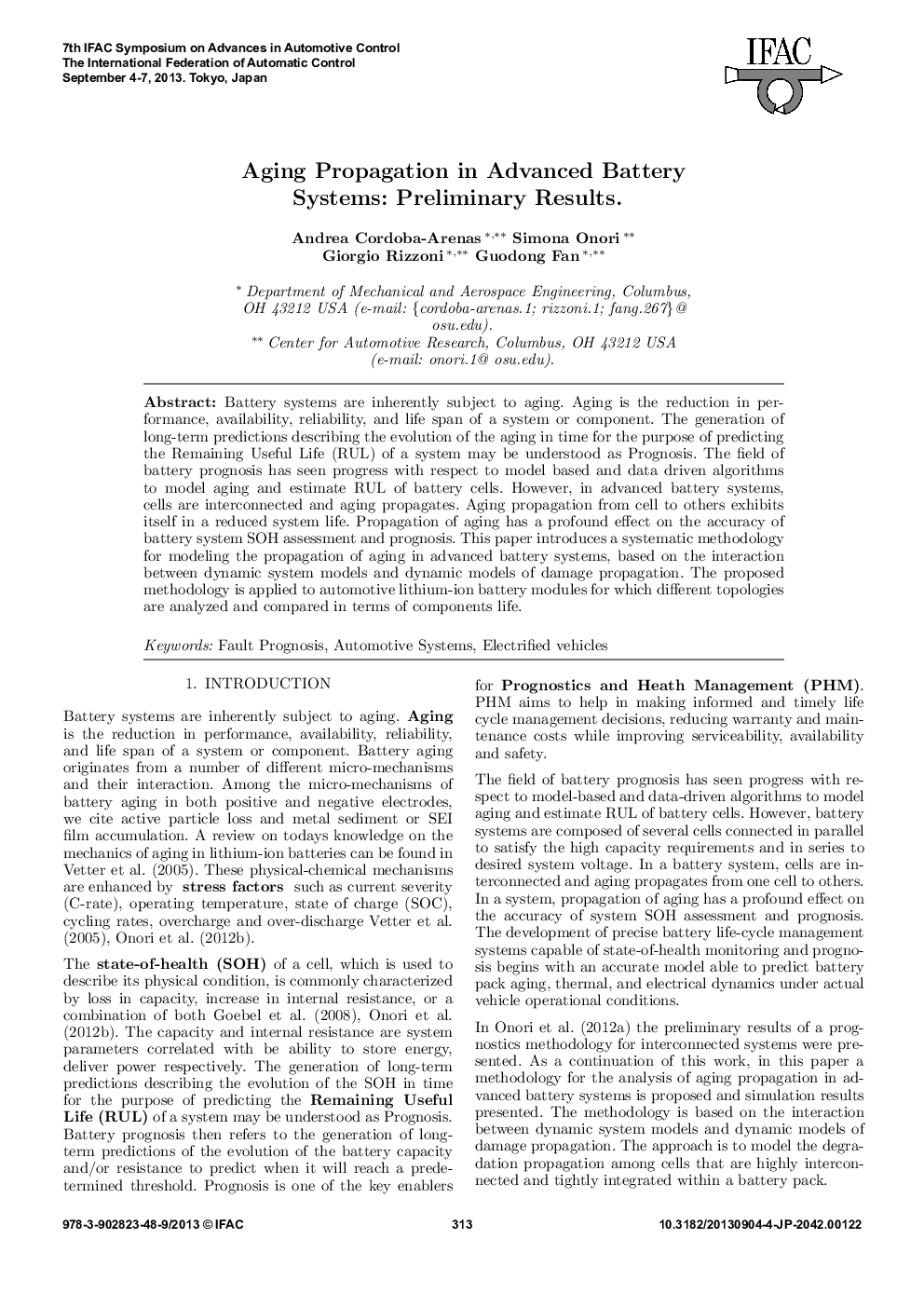| Article ID | Journal | Published Year | Pages | File Type |
|---|---|---|---|---|
| 715596 | IFAC Proceedings Volumes | 2013 | 6 Pages |
Battery systems are inherently subject to aging. Aging is the reduction in performance, availability, reliability, and life span of a system or component. The generation of long-term predictions describing the evolution of the aging in time for the purpose of predicting the Remaining Useful Life (RUL) of a system may be understood as Prognosis. The field of battery prognosis has seen progress with respect to model based and data driven algorithms to model aging and estimate RUL of battery cells. However, in advanced battery systems, cells are interconnected and aging propagates. Aging propagation from cell to others exhibits itself in a reduced system life. Propagation of aging has a profound effect on the accuracy of battery system SOH assessment and prognosis. This paper introduces a systematic methodology for modeling the propagation of aging in advanced battery systems, based on the interaction between dynamic system models and dynamic models of damage propagation. The proposed methodology is applied to automotive lithium-ion battery modules for which different topologies are analyzed and compared in terms of components life.
